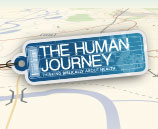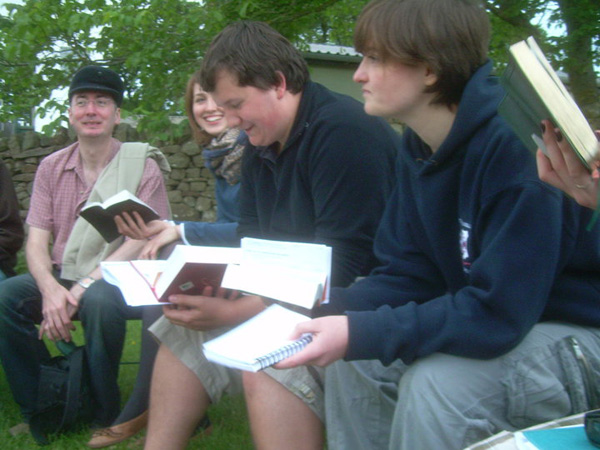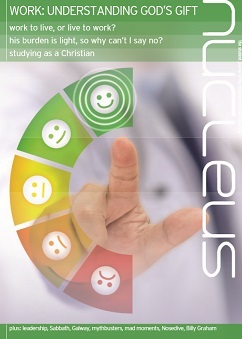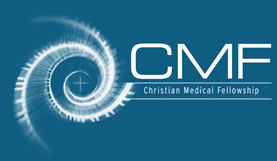It's entirely possible that many student readers of Nucleus will hardly know the name Billy Graham. But at the peak of his powers Billy Graham ranked with Martin Luther King as one of America's best known and most respected twentieth-century Christian leaders and with Mother Teresa and Pope John-Paul II as a global Christian figure. He died aged 99 on 21 February 2018. He personally directed that his epitaph should simply say, 'Billy Graham, preacher'. But this is only part of the story. His legacy extends far further.
the preacher
Billy Graham preached face-to-face to an estimated 215 million people, leading 417 missions in 185 countries. By judicious use of mass-media he multiplied his audience many times over. He burst on the scene as a 28 year-old in September 1947 where he drew an audience of 6,000 to the Civic Stadium, Grand Rapids, Michigan. He soon caught the attention of the newspaper tycoon Randolph Hearst, who though he never met Billy Graham, used his newspapers to propel the preacher into the limelight. The evangelist had all the attributes of an all-American icon, tall, wavy golden hair, and a truly amazing voice. For a great example of the power of Billy Graham's message sample this three minute video: bit.ly/2p9R9PC
Billy Graham and his team would rent a big venue, a stadium or park, with every detail meticulously planned. The lead in time was often two years or more. He never acted without securing invitations from local churches and they would bus in large numbers of members who brought along their unconverted friends and neighbours. Locally recruited choirs numbered as many as 5,000. He purveyed a simple gospel. He had the knack of using simple but lively language to explain the life of faith. He would tell a gripping story, make his audience laugh and then command holy silence. His most characteristic phrase was: 'the Bible says.' Right at the start of his message he would create an expectation that listeners would dedicate their lives to Christ and they did in droves.
At the climax of the message he would invite the choir to quietly sing 'Just as I am' as he invited people to 'get up out of their seats' and walk to the front to signal their decision to receive Christ as Saviour. Often he would stop at the end of a stanza to re-enforce the invitation. It was a method he copied from the Chicago evangelist Dwight L Moody (1837-1899). Then he would lead inquirers (as they were called by the Billy Graham team) in a short prayer of commitment. They would then be met one-to-one by a counsellor trained for the task by the Billy Graham team, recruited from local churches. Inquirers were given literature and counsellors were expected to follow up the contact.
The Graham team first came to Britain in 1954 and returned another 15 times. Not all religious leaders were welcoming. The then Bishop of Durham, Michael Ramsay, later Archbishop of Canterbury, fulminated over the 'menace of fundamentalism', accusing the evangelist of being sectarian and heretical. But the meetings filled the 11,400-seat Harringay Arena every night for twelve weeks. Two closing events, at White City and Wembley Stadium, drew crowds of 65,000 and 120,000 respectively. Billy Graham won over the poet laureate John Betjeman who wrote in The Spectator: 'Billy Graham knows his Bible so well and he brings the scenes of our Lord's life on earth, so vividly before us, that neither Catholic nor Evangelical could quarrel with him.'
Perhaps Billy Graham's most famous mission was at New York's Madison Square Garden, 15 May — 1 September 1957. It had a mighty impact. More than two million people attended in person. Over 56,000 people came forward to pledge to follow Christ. Millions more across the US watched the meetings on TV. For years the formula stayed much the same, although there were tweaks from time to time. In the Republic of Ireland, Catholics drew a different meaning than Protestants from the invitation to 'come forward and receive Christ'. So the language was adapted. Eventually Graham stopped calling his missions 'Crusades' having been persuaded this was a serious stumbling block to Muslims.
Billy Graham preached in three campaigns in Sydney, Australia and I attended them all and have lots of personal memories. The 1959 meetings were held at Sydney's Agricultural Showground, but they could be heard even in the outback thanks to landline relays. At one of these meetings in a country town near where I was raised, a charming but hopeless drunk named Toby Priestley was soundly converted. My Dad became his mentor and to my knowledge Toby never touched a drop of booze again. Twice my family travelled to Sydney to sample the meetings. I will never forget the final Sunday. The Showground was packed to the gunnels and overflowed to the neighbouring Sydney Cricket Ground.
Billy returned to Sydney in 1968 and 1979. In 1968, I volunteered as a counsellor. In 1979, I was involved with media relations and helped run a 'School of Writing', one of the many parallel events that went with visits by Billy Graham.
Historians agree that the 1959 Greater Sydney Crusade had the greatest impact of the three. Two schoolboy brothers were among thousands who came forward in response to Billy's invitation, their names, Peter and Philip Jensen. Decades later, Peter — a theologian of distinction — became the Anglican Archbishop of Sydney. Philip, an effective evangelist, ended his working life as Dean of Sydney. One of the most important long-term legacies of 1959 was that it prompted a large cohort of men to respond to the call to the Anglican ministry.
Very early on, Billy determined never to engage with speculative theological questions. As the first editor of Decision magazine, Sherwood Wirt, once told me: 'Billy never changes.' But in inessentials he did. In the 1990s, he remodelled the formula, though never the message. In place of the traditional 'youth night' he offered a 'Concert for the Next Generation', featuring Christian rock, rap, and hip-hop artists. Young people listened intently to the ageing Billy's message.
Billy Graham the entrepreneur
Billy Graham was a person of prodigious energy and superfit. He multiplied his audience through use of literature, landlines, radio and television. In 1950, Graham founded the Billy Graham Evangelistic Association (BGEA) which still operates. He founded Hour of Decision, a weekly radio broadcast syndicated globally for more than 50 years. He syndicated a newspaper column, titled 'My Answer'. He founded Youth for Christ and Christianity Today magazine. (It remains the US flagship evangelical magazine.) He started World Wide Pictures which produced and distributed more than 130 films. He helped develop the Evangelical Council for Financial Accountability, TransWorld Radio, World Vision and the National Association of Evangelicals. The list goes on.
staying above reproach
Many preachers fall prey to sin. Billy Graham was always aware of temptations that come with money and fame. Very early on he appointed a board which independent of him set his salary. It ensured he never got enmeshed in the financial hijinks of later televangelists. He openly encouraged intercession that he would be kept from sexual temptation. He ensured this with a strict rule that other than his wife Ruth he would not meet one-to-one with a woman. He was strictly teetotal. He would instruct minders to keep an eagle eye out at receptions in case an opportunist journalist would slip an alcoholic drink into his hand and snap a photo, while he intently engaged in conversation.
the Lausanne movement
By giving his blessing to and attending the 1974 International Congress on World Evangelisation in Lausanne, Switzerland, Billy Graham ensured the longevity of a most important global movement. The key players were England's John Stott, Bishop Jack Dain from Sydney and his brother-in-law Leighton Ford. His support gave the Congress prestige and momentum which otherwise would not have occurred. Lausanne helped evangelicals recover their social conscience and gave voice to a generation of evangelicals from the increasingly important global south. Lausanne 1974 heralded the great mission fact of the times: that the transmission of the gospel was no longer one-way, the West to the rest. It circulated from everywhere to everywhere.
Billy Graham and the evangelical movement
When Billy Graham came on the scene in the 1940s the evangelical movement, especially in the US, had grown somehow 'hard in the arteries'. Over many years it had been riven by internal controversies and was at risk of becoming marginal, not only in the US but in Britain as well. In Billy Graham, the constituency found a new face. He helped unite it and gave it new energy. He was instrumental in forming new alliances for the sake of the gospel. Some, of course, remained suspicious, not least of his good relations with Roman Catholics. He became a counsellor to a succession of US presidents from Dwight Eisenhower to George W Bush and a global ambassador for the Christian faith.
will there be another like him?
The gospel remains the same but the social context in which it's offered changes all the time. Social media is rapidly changing how ideas and messages are transmitted. Drawing big crowds to a Christian rally is probably a thing of the past. Billy Graham, like Dwight L Moody before him, was essentially a revivalist, calling people back to a faith where they knew many of the main elements. Today, in the Western world large swathes of people do not know the Christian story and many are downright hostile to it.
Communicating the gospel today raises challenges similar to those faced by Paul when he preached in Athens (see Acts 17). Paul stood before an audience which did not possess the connecting points to the gospel that he could use with Jewish audiences. Communicating to pagan Athenians required Paul to re-mix the story using distinctively different cultural connectors than those he would use with Jews. He delivered the same essential content but with a fresh presentation. We face a similar task for our times.
Billy Graham, 'he being dead, still speaks' (Hebrews 11:4).
John Martin is CMF Head of Communications
discussion points
- What 'connecting points' to the gospel might help your friends?
- How can a medical student stay 'above reproach'? What are the biggest temptations?
- Can you communicate the gospel clearly and succinctly? If not, talk to your CMF Student link about organising a Confident Christianity course
































